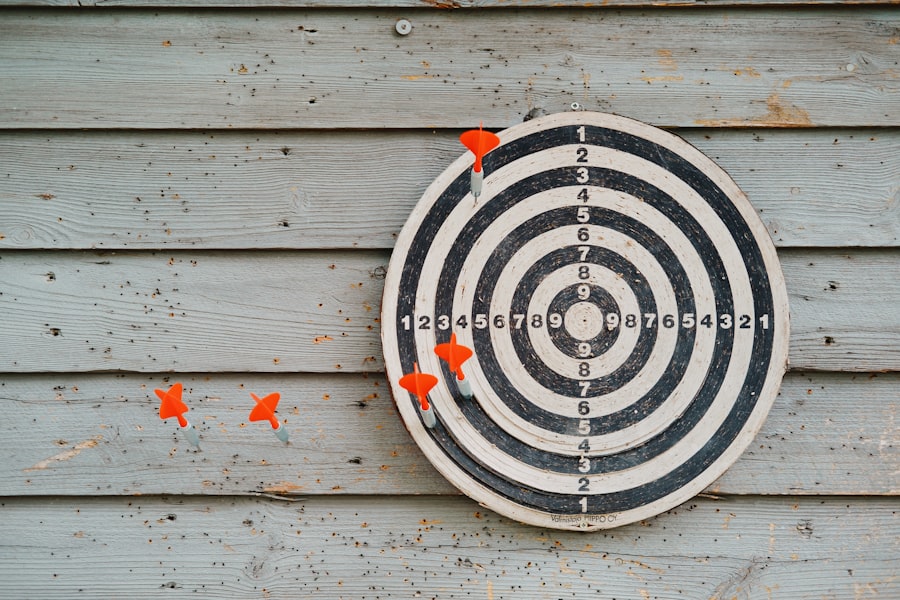There are various types of learning games that are suitable for 5th graders, each designed to target different skills and subject areas. One popular type of learning game is the board game, which can be used to teach a wide range of subjects such as math, language arts, science, and social studies. Board games often involve problem-solving, critical thinking, and strategic planning, making them an effective tool for engaging 5th graders in their learning.
Another type of learning game is the digital game, which can be accessed through computers, tablets, or other electronic devices. Digital games can provide interactive and immersive experiences that cater to the tech-savvy nature of today’s students. These games can cover a variety of subjects and skills, from coding and programming to language learning and geography.
Furthermore, there are hands-on learning games that involve physical activities and manipulatives, such as puzzles, building blocks, and science experiments. These types of games can help 5th graders develop their fine motor skills, spatial reasoning, and scientific inquiry skills. Additionally, there are role-playing and simulation games that allow students to step into different roles and scenarios, promoting empathy, social skills, and creativity.
By incorporating a variety of learning games into the curriculum, educators can cater to different interests and learning styles, ensuring that all students have the opportunity to engage with the material in a way that resonates with them.
Benefits of Incorporating Learning Games into 5th Grade Curriculum
Incorporating learning games into the 5th grade curriculum offers a wide range of benefits for both students and educators. One of the key benefits is that learning games can make the educational experience more enjoyable and engaging for students. By introducing an element of fun and play into the classroom, educators can create a positive and dynamic learning environment that motivates students to actively participate in their learning.
This can lead to increased student engagement, improved attention span, and a more positive attitude towards learning in general. Furthermore, learning games can help 5th graders develop essential skills such as critical thinking, problem-solving, collaboration, and creativity. Many games require students to think strategically, make decisions, and work together with their peers to achieve a common goal.
These skills are not only important for academic success but also for future career readiness and personal development. Additionally, learning games can cater to different learning styles and abilities, making it easier for educators to reach all students in the classroom. This inclusivity can help boost students’ confidence and motivation, as they are able to experience success and progress in their learning journey.
Moreover, incorporating learning games into the curriculum can help students retain information more effectively. When students are actively engaged in a game-based activity, they are more likely to remember the concepts and skills they have learned. This can lead to improved long-term retention and application of knowledge.
Overall, the benefits of incorporating learning games into the 5th grade curriculum are numerous and far-reaching, making them an essential tool for educators.
How to Choose the Right Learning Games for 5th Graders

When choosing the right learning games for 5th graders, educators should consider several factors to ensure that the games are effective and engaging. Firstly, it is important to align the learning games with the curriculum and learning objectives. Educators should identify the specific skills and concepts that they want students to learn or reinforce through the games.
This will help ensure that the games are relevant and meaningful in the context of the overall educational goals. Secondly, educators should consider the interests and preferences of their students when selecting learning games. By choosing games that resonate with the students’ interests, educators can increase the likelihood of student engagement and motivation.
Additionally, educators should consider the different learning styles and abilities present in the classroom when choosing learning games. It is important to select games that cater to a variety of strengths and preferences, ensuring that all students have the opportunity to engage with the material in a way that suits them. Furthermore, educators should consider the level of challenge presented by the learning games.
The games should be appropriately challenging for 5th graders, encouraging them to think critically and problem-solve while still being achievable. Additionally, educators should consider the accessibility of the games, ensuring that all students have equal opportunities to participate. Finally, educators should consider the resources available for implementing the learning games, such as materials, technology, and space.
By considering these factors when choosing learning games for 5th graders, educators can ensure that the games are effective, engaging, and meaningful.
Examples of Popular Learning Games for 5th Graders
There are numerous popular learning games that are suitable for 5th graders across various subjects and skills. One example is « Math Bingo, » a game that combines math practice with the excitement of bingo. Students are given math problems to solve, and they mark the answers on their bingo cards.
This game helps reinforce math skills such as addition, subtraction, multiplication, and division in a fun and interactive way. Another popular game is « Scrabble Junior, » which helps students improve their vocabulary and spelling skills while having fun creating words on the game board. In addition, « Oregon Trail » is a popular simulation game that allows students to experience life as a pioneer traveling westward in the 19th century.
This game provides an immersive historical experience while teaching students about decision-making, resource management, and problem-solving. Another example is « Code.org, » which offers a variety of digital games and activities designed to teach students coding and computer science concepts in an engaging way. Furthermore, « Jeopardy » is a popular game show format that can be adapted into an educational game for reviewing various subjects such as science, social studies, language arts, and more.
This game encourages critical thinking and quick recall of information while adding an element of competition and excitement to the classroom. These examples demonstrate the wide range of learning games available for 5th graders across different subjects and skills.
Tips for Making Learning Games Fun and Effective for 5th Graders
To make learning games fun and effective for 5th graders, educators can follow several tips to ensure that the games are engaging and meaningful. Firstly, it is important to set clear goals and expectations for the learning games. Educators should communicate the purpose of the game and how it relates to the overall curriculum and learning objectives.
This will help students understand the relevance of the game and stay focused on the intended outcomes. Secondly, educators should create a positive and supportive atmosphere during game-based activities. Encouraging teamwork, collaboration, and positive competition can help create a sense of excitement and engagement among students.
Additionally, educators should provide opportunities for reflection and discussion after playing a game to help students connect their experiences with the broader context of their learning. Furthermore, educators can incorporate elements of choice and autonomy into game-based activities by allowing students to make decisions or customize their experiences. This can help increase student motivation and investment in the game.
Additionally, educators should provide constructive feedback during game-based activities to help students understand their progress and areas for improvement. Moreover, educators can integrate technology into game-based activities by using digital platforms or apps that offer interactive and immersive experiences. This can cater to the tech-savvy nature of today’s students while providing opportunities for hands-on exploration.
Overall, by following these tips, educators can make learning games fun and effective for 5th graders while promoting engagement, critical thinking, collaboration, and skill development.
Incorporating Learning Games into 5th Grade Lesson Plans

Incorporating learning games into 5th-grade lesson plans requires careful planning and integration to ensure that they align with educational goals while providing an engaging experience for students. One way to incorporate learning games into lesson plans is by using them as a form of formative assessment or review activity at the end of a unit or lesson. For example, educators can use a game show format like « Jeopardy » to review key concepts or vocabulary from a unit in an interactive way.
Another way to incorporate learning games is by using them as a hands-on activity to introduce or reinforce new concepts or skills. For example, educators can use a board game like « Math Bingo » to practice math facts or problem-solving skills related to a specific unit. Furthermore, educators can use digital games or simulations as part of a project-based learning experience where students explore real-world scenarios or problems related to their curriculum.
For example, students could use a simulation game like « Oregon Trail » as part of a unit on westward expansion in American history. Moreover, educators can integrate learning games into small group or station-based activities where students rotate through different game-based tasks related to different subjects or skills. This allows for differentiated instruction while providing opportunities for collaboration and peer interaction.
Overall, by strategically incorporating learning games into lesson plans across different subjects and skills, educators can create a dynamic and engaging learning environment that promotes critical thinking, problem-solving, collaboration, creativity, and skill development among 5th graders.




